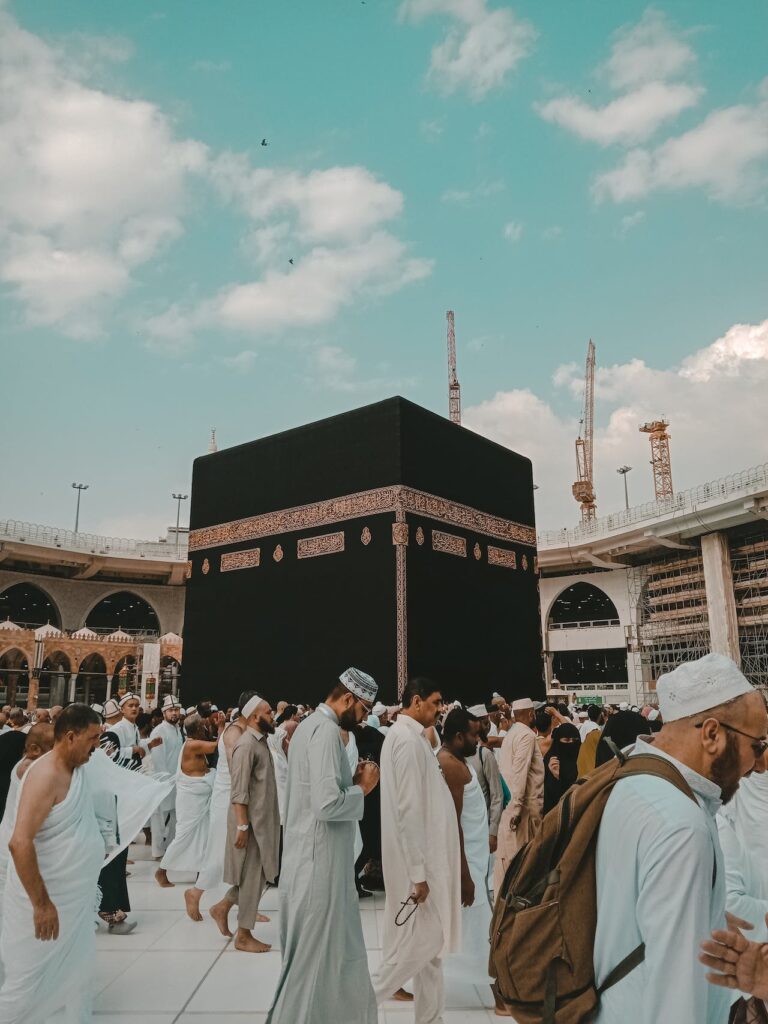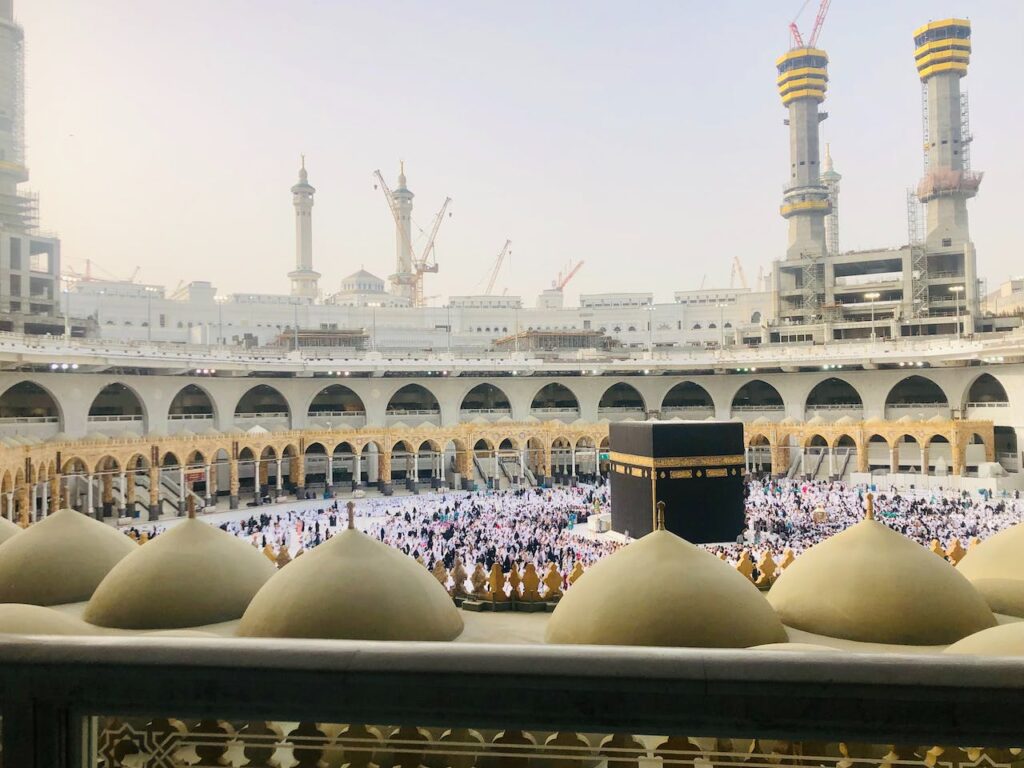By the end of this article, you should have a clearer understanding of the different types of Tawaf, specifically the last Tawaf, Tawaf Al-Wadaa, and its importance in the Hajj and Umrah rites. Let’s start our exploration by understanding what Tawaf is.
The Tawaf, an act of devotion involving the circumambulation of the Kaaba, is not just a physical ritual but also represents a spiritual journey that signifies the believer’s submission and closeness to Allah. Each type of Tawaf has its unique significance and context in the journey of Hajj or Umrah. What are the Different Types of Tawaf?
What is The Last Tawaf Called?
The last Tawaf is Tawaf Al-Wadaa (Farewell Tawaf), This is the final Tawaf performed before leaving Mecca after completing Hajj or Umrah. It is an emotional moment, signifying the end of a spiritual journey.
The Tawaf Al-Wadaa, also known as the Farewell Tawaf.
is the final act performed by the pilgrim before leaving Mecca after the completion of Hajj or Umrah. This Tawaf signifies the end of the spiritual journey, and it is a time of deep reflection and gratitude. The word ‘Wadaa’ means ‘farewell’, and this Tawaf is a way of bidding goodbye to the Kaaba, the Masjid Al-Haram, and the holy city of Mecca.
It serves as a poignant reminder of the fleeting nature of this worldly life compared to the eternal life hereafter. It’s a moment of deep introspection, where the pilgrim reflects on the transformative journey they have undertaken,
the lessons learned, and the spiritual growth achieved.
It’s important to note that Tawaf Al-Wadaa is compulsory for those who are not residents of Mecca. If a pilgrim leaves Mecca without performing it, they are required to return and perform it, if possible, or send a sacrifice to Mecca as expiation.
Other Types of Tawaf
Every journey has different stages, and each stage has its own significance. The same applies to the spiritual journey of Tawaf. There are 4 other types of Tawaf, each performed at different stages of Hajj and Umrah, and each carries its own spiritual and symbolic significance.
-
Tawaf Al-Ifadhah (Rukn Al-Yaman)
Tawaf Al-Ifadhah, also known as Rukn Al-Yaman, is another crucial Tawaf in the Hajj pilgrimage. This Tawaf is performed after the Day of Arafah, during the days of Tashreeq, wich are the 11th, 12th, and 13th days of the Islamic month of Dhul Hijjah.
The Tawaf Al-Ifadhah is considered the main Tawaf of Hajj, and it signifies the culmination of the pilgrim’s journey. It is a time of intense spiritual reflection and a celebration of the successful completion of the Hajj rituals.
During this Tawaf, the pilgrim circles the Kaaba seven times, just like in other types of Tawaf. However, there is a unique aspect to the Tawaf Al-Ifadhah.
Performing Tawaf Al-Ifadhah is a deeply moving experience that leaves an indelible mark on the pilgrim’s heart. This Tawaf embodies the pilgrim’s commitment to continue living a life centered around Allah after returning from Hajj. You can learn more about this and other types of Tawaf in this comprehensive guide on What are the Different Types of Tawaf?.
-
Tawaf Al-Qudoom (Arrival Tawaf)
Another significant type of Tawaf is the Tawaf Al-Qudoom or the Arrival Tawaf. This Tawaf is performed as the pilgrim’s first ritual upon their arrival in Mecca. It serves as the opening act of their spiritual journey, marking the beginning of their Hajj or Umrah pilgrimage.
The word ‘Qudoom’ translates to ‘arrival’. and this Tawaf is a way of honoring the sanctity of the holy city and the Kaaba. Similar to other types of Tawaf, the pilgrim circles the Kaaba seven times, starting and ending at the Black Stone.
Performing Tawaf Al-Qudoom is a profound experience,
as it symbolizes the pilgrim’s transition from their worldly life to a spiritual journey focused on devotion and submission to Allah.
-
Umrah Tawaf
Also known as Tawaf al-Umrah, it is performed upon arrival in Mecca as part of the Umrah ritual.
Read More about Umrah Tawaf
-
Tawaf Al-Nafl (Virtuous Tawaf)
Finally, we come to the Tawaf Al-Nafl, also known as the Virtuous Tawaf. This Tawaf is unique as it’s not obligatory but rather a voluntary act of worship that can be performed at any time,
except during the time of the obligatory Tawaf.
Just like other types of Tawaf, Tawaf Al-Nafl involves circling the Kaaba seven times, starting and ending at the Black Stone. However, since it’s not obligatory, there are no specific rules or rituals associated with it. It can be performed at any time and as many times as the pilgrim wishes. It’s an opportunity for the pilgrim to spend additional time in the holy site, reflecting and praying.
Performing Tawaf Al-Nafl is a deeply personal and spiritual experience. It’s a testament to the believer’s unwavering devotion and commitment to Allah, a moment of deep reflection, and a chance to earn additional rewards from Allah.
Conclusion
In conclusion,
From the moment the pilgrim sets foot in the holy city of Mecca to the final farewell, Tawaf remains a constant and powerful symbol of devotion, unity, and submission to Allah. Each type of Tawaf, be it Tawaf Al-Qudoom, Tawaf Al-Ifadhah, Tawaf Al-Nafl, or the final Tawaf al-Wadaa,
carries deep spiritual significance and forms an integral part of the Hajj and Umrah pilgrimages.






